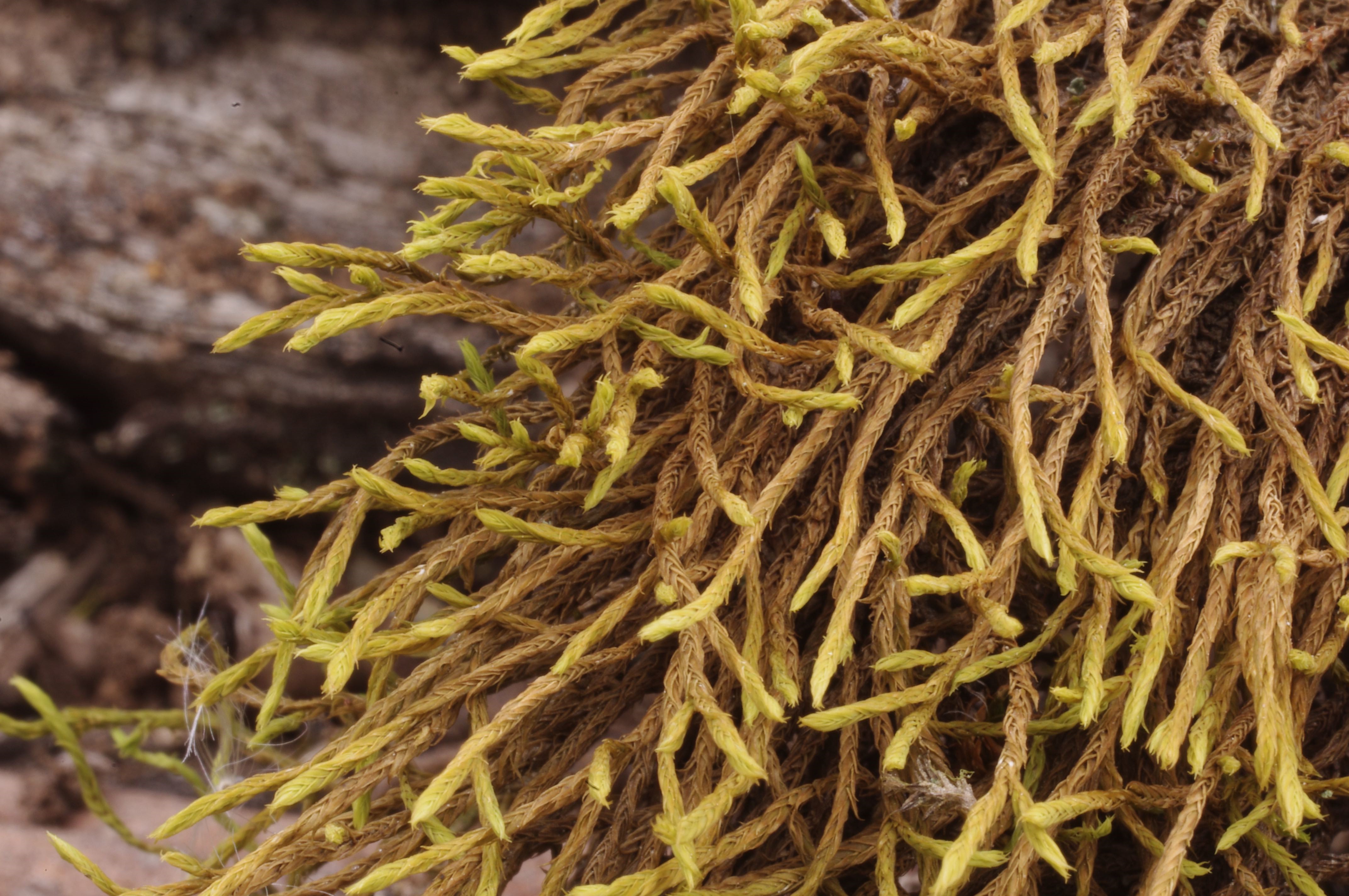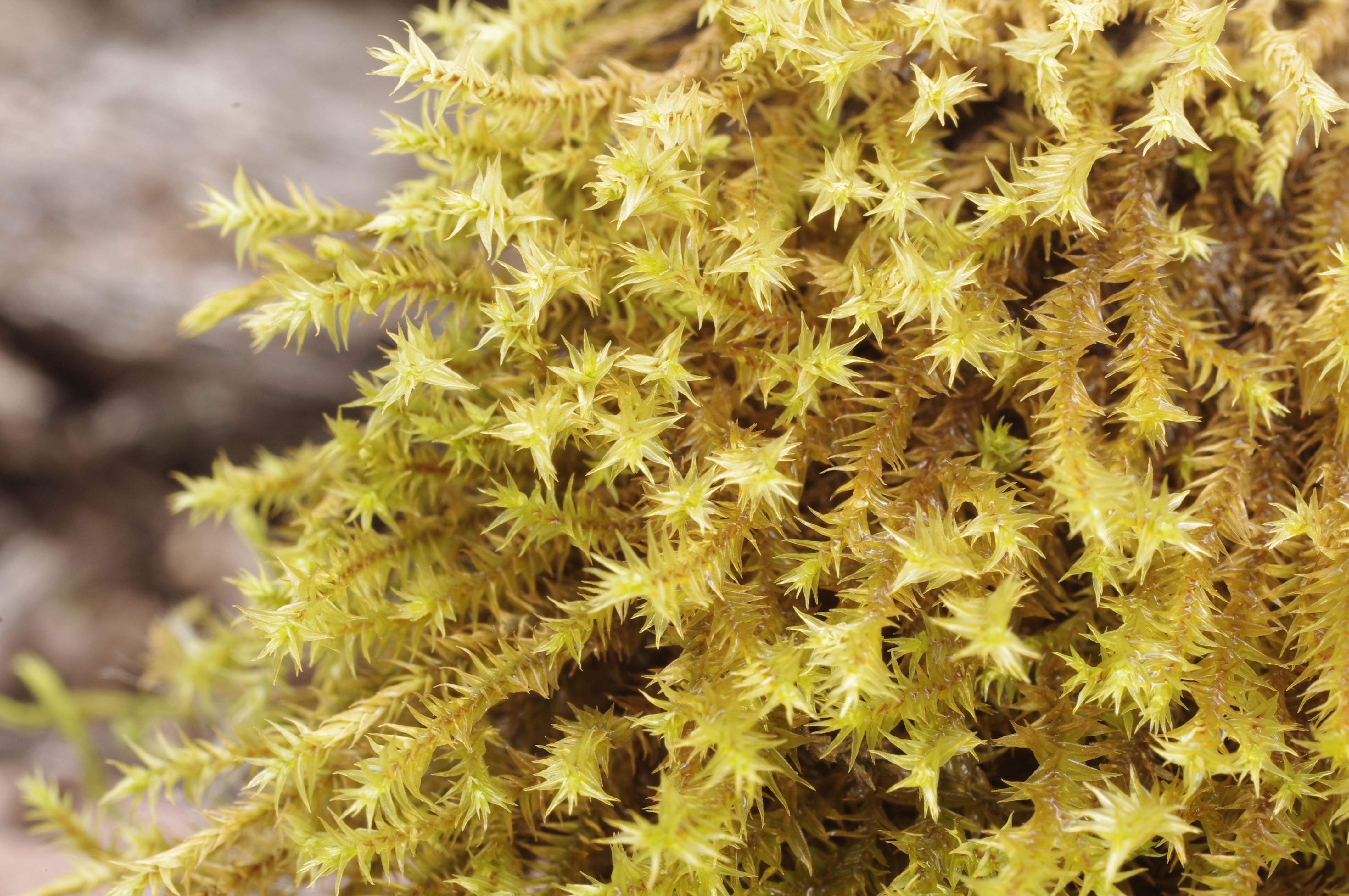Bryophyte of the Month
Triquetrella papillata (Hook.f. & Wilson) Broth.
Triquetrella papillata was described by William Hooker and Thomas Wilson, who named it Didymodon papillatus. The genus name refers to the three-ranked leaves, and the specific epithet refers to the papillose cells. (Wilson had given it the manuscript name Leskea rubricaulis, the epithet referring to the distinctly red stem.) They called it ‘A very peculiar Moss, resembling a Leskea, but the perichaetia are terminal, though apparently axillary in consequence of the growth of innovations.’ Viktor Brotherus later transferred the species to Triquetrella.
Despite is creeping habit that suggests a pleurocarp, Triquetrella papillata is acrocarpous because of the terminal perichaetia, and is classified in the Pottiaceae. It is a common terrestrial moss of forests, woodlands and grasslands in southern Australia and New Zealand, especially where there is a dry, grassy understorey, and sometimes grows on tree roots and dead wood. It can form extensive mats, especially in shade, but is most often found in open colonies creeping through grasses. Its longitudinal range extends from Western Australia to New Zealand (including the Chatham Islands), reaching as far north as southern Queensland.
Triquetrella papillata can be recognised by the triangular, three-ranked leaves (obvious only when moist), the red stem that is visible between the leaves when moist, and the papillose cells. When dry the leaves are appressed to the stem and straight, except at the very tips of shoots. An unusual feature of the moss is that its leaves open very rapidly when wetted, springing into a sharply reflexed attitude in a few seconds; this had led to the common name Sproing Moss.
A sister species, Triquetrella tasmanica (Broth.) Granzow, has a similar distribution to T. papillata and grows on dry soils, especially under rock overhangs. It differs most obviously in having the leaves strongly curled and slightly twisted around the stem when dry. There are purple-red rhizoids all along the stem, and the costa ends in a short colourless point.

